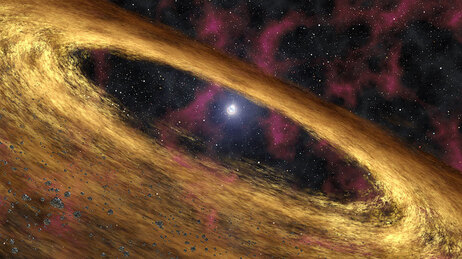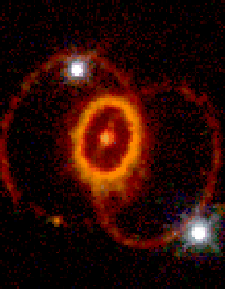Looking for shelled gastropods, bivalves, and mollusca? Then try the
Shell Museum


by Abby Buzick
KMOV.com
Posted on December 7, 2009 at 3:52 PM
Recipe Courtesy Chef Emma Voskuil
9 inch unbaked pie shell (you can use frozen)
3 eggs
1/2 cup brown sugar
1 cup dark corn syrup
1/2 teaspoon salt
1 teaspoon vanilla
1/4 cup butter melted
1 cup pecan halves
Whipped cream or topping (optional)
Vanilla bean ice cream (optional)
Defrost pie shell if it's frozen
Preheat oven to 375F
Beat eggs in a medium bowl
Add sugar, syrup, salt, and vanilla until well combined
Stir in pecans and melted butter
Pour into shell
Bake 45-50 minutes or until filling is set in the center
Let cool completely before cutting or refrigerating.
Cut and serve with ice cream or whipped cream
Cinnamon Pumpkin Soup
by Emma Voskuil KMOV.com
Posted on October 20, 2010 at 7:53 AM
Cinnamon Pumpkin Soup
• 3 tablespoons butter
• 2 carrots – peeled and small diced
• 2 celery stalks – small diced
• 1 yellow onion – small diced
• 8 cups pumpkin peeled, seeded, and chopped (about 2-3 pounds)
• 8 cups of chicken stock
• 1 tablespoon cloves
• 2 sticks of cinnamon
• 1 dried chili de arbol
• 2 tablespoons honey
• 2/3 cup heavy whipping cream
• 4 small pumpkins bowls (see below for recipe)
1) Melt butter in a large stock pot
2) Sauté vegetables until soft
3) Add pumpkin and stock
4) Take a coffee filter and put in cinnamon, cloves and chili, tie with string and place in stock pot attach the string to the handle of the stock pot
5) Cover and simmer until the pumpkin falls apart when stabbed with a fork
6) Pull out coffee filter pack of herbs
7) Puree soup in a blender
8) Return to stock pot
9) Add in cream and honey
10) Bring to a simmer and season to taste with salt and pepper
11) Pour into individual pumpkin bowls
Pumpkin Bowls
• 4 small pumpkins (about .5 -1 pound each)Rocks aren't alive. Life is.
So think of them as separate. Rocks over here; life over there.
Then along come Robert Hazen and his colleagues with their study, "Mineral Evolution," published in the American Mineralogist and all of a sudden categories shatter. I'm amazed. I hadn't thought of this, even remotely.
Here's what they found:


Supernovae last one or two years, and can shine brighter than a whole galaxy for this time. What happens to the star after the supernova depends on how big it was to begin with. If the star was only a few times bigger than the Sun, the core will shrink into a tiny neutron star only a few miles across. If the star was much bigger than the Sun, the core will shrink down to a black hole.
A typical neutron star is the size of a small city, only 10 Kilometers in diameter but it may have the mass of as many as three suns. It is quite dense. One spoonful of neutron star material on Earth would weigh as much as all the cars on Earth put together.This figure shows the four common states of matter: solid, liquid, gas, and plasma.
Consider water as an example. Solid water is ice. Liquid water is, well, water. We call water in its gaseous form "water vapor". A plasma created from water would include electrons, protons (hydrogen atom nuclei), and oxygen atom nuclei (protons and neutrons).
There are special names for most transitions from one state to another. Freezing is turning from a liquid to a solid; melting is turning from a solid to a liquid. The transition from liquid to gas can happen by boiling or evaporation. Condensation is changing from a gas to a liquid. Sometimes (usually at low pressure) a solid can become a gas directly (without first melting to become a liquid); this transformation is called "sublimation". Removing electrons from atoms (usually in a gas) to produce a plasma is called "ionization".
Stars are made of plasma, so plasma is the most abundant form of matter in the universe.
There are several other very exotic and unusual forms of matter that we don't encounter in daily life. A Bose-Einstein condensate can only form at temperature near absolute zero, and was first created in a lab in 1995. Degenerate matter can come into being under incredibly high pressure inside white dwarf and neutron stars. There are other very strange, very rare forms of matter as well.
